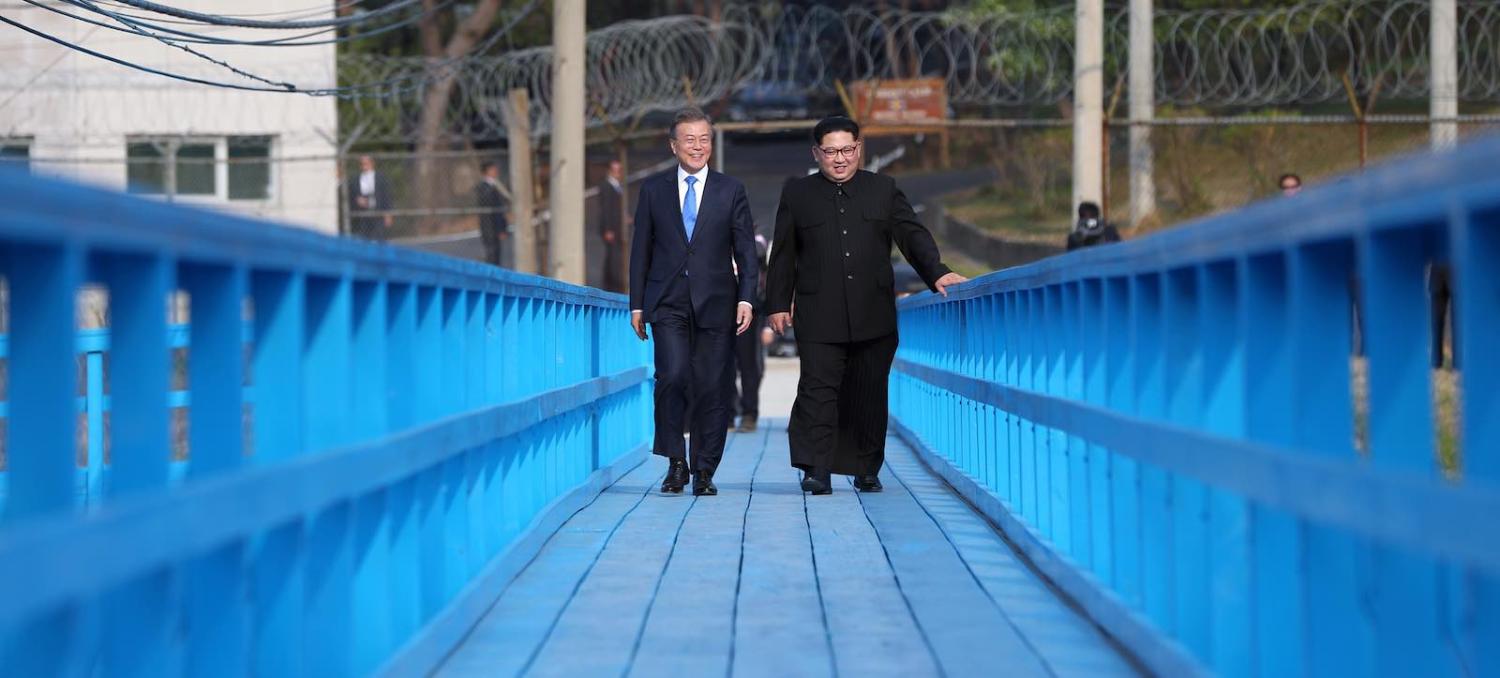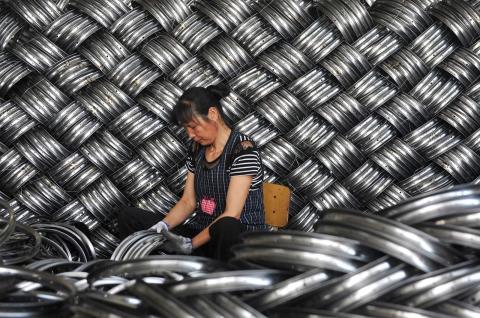Last week, the South Korean Blue House announced preparations for another summit – what will be the third – between President Moon Jae-in and North Korea’s Chairman Kim Jong-un in the northern autumn. Both Seoul and Pyongyang have sent ministers to discuss topics related to the establishment of a peace regime and joint economic projects.
From two declarations that were meant to supplement one another, the failure of the two allies to sort out their different interpretations of the texts complicates their own agendas.
This engagement between the two Koreas takes place at the same time as the US and North Korea remain deadlocked over details of the North’s denuclearisation timeline, the status of its nuclear and missile programs, and Pyongyang’s intentions for its nuclear arsenal.
This mismatch between South Korea and the US about rapprochement with the North is significant. The fact that the Panmunjom Declaration, signed in April between the two Koreas, and the Singapore Joint Declaration, signed in June between US President Donald Trump and Kim, each share the same fundamental goals should have meant that progress made on one front would spill over to the other.
However, recent developments illustrate an apparent discord between these two declarations and pose a major threat to the successful accomplishment of both.
The reason the US and South Korea are making inconsistent progress vis-à-vis North Korea is due to their different interpretations of the two declarations, as well as the order of actions embodied within them. Both documents pledge denuclearisation of the Korean Peninsula, an end to the Korean armistice, and the normalisation of diplomatic relations.
Moon’s engagement policy prioritises improvements in inter-Korean relations, both economically and politically, over denuclearisation. As a result, Moon views the Panmunjom Declaration as a starting point to revive the moribund North–South relations and legitimise his search for a permanent peace regime. The language of this declaration contains hope for national reconciliation and unity more than actual measures to reduce the military tension and denuclearise the North.
This indicates that both Seoul and Pyongyang need to reach a certain level of mutual trust and engagement before talks about denuclearisation can commence. Moon’s determination to move ahead with this agenda reflects North Korea’s and South Korea’s decisions to send ministers from unification and economic departments for talks ahead of his next summit with Kim.
One the other hand, the Singapore Joint Declaration, reached under intense pressure to achieve Complete, Verifiable, and Irreversible Denuclearisation (CVID), puts much emphasis on North Korea’s significant concessions on the nuclear front before any talks of diplomatic normalisation and economic development can begin. Unfortunately, since North Korea and the US have already varied on the definition of denuclearisation before the Trump–Kim summit, the declaration only committed to a vague US security guarantee for Pyongyang in exchange for the latter’s promise to denuclearise.
As North Korea and the US attempt to work out the details of the declaration, more differences over the notion of concession have been revealed. North Korea claimed that its moratorium on nuclear and missile tests, along with the dismantlement of Punggye-ri and Sohae test sites, are enough concessions. However, Secretary of State Mike Pompeo and US intelligence agencies have argued there can be no guarantee that Pyongyang’s concessions are not reversible.
The outcome is the lack of progress on denuclearisation matters, allowing North Korea to continue producing more nuclear fuel and upgrade its missile program.
Seoul and Washington are now stuck in a mutual trap of order of actions with respect to the two declarations. South Korea’s focus on improvement in inter-Korean relations runs directly counter to US efforts to verify North Korea’s nuclear concessions. From two declarations that were meant to supplement one another, the failure of the two allies to sort out their different interpretations of the texts complicates their own agendas. It gives Pyongyang more leeway to maintain its nuclear arsenal under the shadow of engagement.
To address this problem, the US and South Korea need to agree on the details of the upcoming inter-Korean summit to make sure they can coordinate under a common course of action.
Currently, Seoul wants to lift international sanctions to legitimise joint economic projects, and Washington has agreed to gradually persuade the North to denuclearise, in contrast to immediate CVID. If Seoul and Washington can create a package deal with phased-in settlement that gives out economic reward when Pyongyang makes a verifiable concession with its nuclear arsenal, it will alleviate the deadlock between the Panmunjom and the Singapore Declaration and solve the allies’ differences over interpretations and sequencing. Since Kim is shifting his focus to domestic economic development, such a solution is likely to force him to seriously contemplate between guns and butter.
Dealing with North Korea has never been easy. The fact that US and South Korean policymakers have not got around this sequencing problem, even after past failures, is evidence of North Korea’s excellent use of tactics to play for time. Before Seoul and Washington make the next move in their negotiations with North Korea, they had better reconcile their differences, or else they may repeat the same mistakes.

